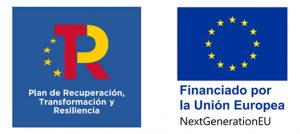CONVERD
Period: 12/2022 – 11/2024 (24 months)
Funding organization: Agencia Estatal de Investigación (AEI)
Principal Investigators of AMADE:
Marta Baena Muñoz marta.baena@udg.edu (IP1)
Laura Carreras Blasco laura.carreras@udg.edu (IP2)
Partners:
AMADE researchers involved in the project: Lluis Torres Llinàs, Joan Andreu Mayugo Majó
Grant agreement number: TED2021-132198B-I00 /MICIU/ AEI / 10.13039/501100011033/ i por la Unión Europea “NextGenerationEU”/PRTR
Funded by » Agencia Estatal de Investigación” (AEI), “Ministerio de Ciencia e Innovación” (MCIN) and the European Union “NextGenerationEU” under reference TED2021-132198B-I00 /MICIU/ AEI / 10.13039/501100011033


The European Commission aims to reduce buildings’ greenhouse gas emissions by 60% for 2030. To meet this goal, building energy upgrades must be done to positively impact climate, equity and resilience performance of structures. This is where the CONVERD project fits, targeting optimal use of materials and energy. The project builds up on two emerging technologies to enable structures with multifunctional smart features such as self-powering, renewable energies storage, flexible energy consumption, extended lifetime, structural health monitoring, increased safety, and large economic and material saving. On the one hand, the strengthening of concrete structures using fibre-reinforced polymers (FRP) reinforcement, and on the other hand, monolithic batteries synergistically embedded into a FRP material. The combined application of the two baseline technologies leads to a multifunctional retrofitting system for concrete buildings and infrastructures, where the reinforcement is a FRP structural battery. When used in existing deteriorated and functional obsolete structures, the multifunctional reinforcement provides an efficient means for repairing and strengthening civil infrastructure and buildings. The high mechanical performance of the multifunctional reinforcement upgrades the mechanical capacity, and so the safety, of long-standing buildings and reduces the risk of collapse. This translates to large material saving and boosts ecological restoration and circular economy. In addition, the multifunctional reinforcement can store electric energy from renewable sources. Unlike separate batteries, when the multifunctional reinforcement is integrated into the structure, it is protected against environmental exposure and vandalism, and does not take up habitable space.
Even though the two baseline technologies have been developed for other uses, they have not yet been combined for application to the construction sector. The CONVERD project aims to carry out the design of the multifunctional retrofitting system, the assessment of the structural and electrical performance under different temperature conditions and the development an analytical modelling framework for reliable and optimized design, predictive maintenance, long-term behaviour and life assessment. The project includes an experimental campaign addressed to characterize the electro-mechanical behaviour of the separate constituents. Different temperature conditions will be considered to approach service-loading conditions. Moreover, to assess the application of the multifunctional retrofitting system in real concrete structures, representative specimens where the FRP structural battery is integrated into a concrete element will be tested. Failure of concrete structures strengthened with FRP almost always is expected to occur by debonding of the FRP from the concrete substrate. Thus, tests will be done on the FRP-concrete joint behaviour and failure modes will be analysed. Moreover, the battery electrical response will be monitored to investigate the influence of the stress level and/or the loss of adherence between the concrete and the multifunctional reinforcement system on the electric performance. The results will be compared against the behaviour observed in the characterization campaign on the separate FRP structural batteries. Finally, analytical models will be formulated based on the experimental evidence.